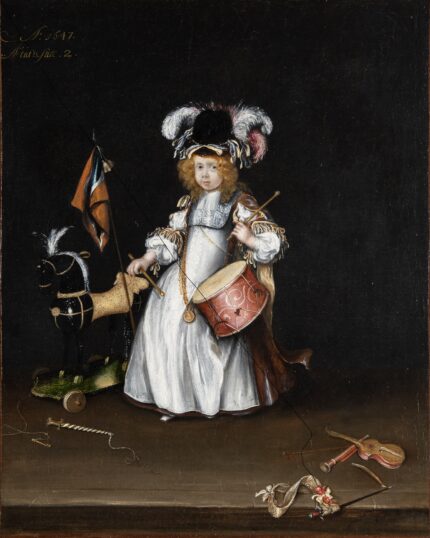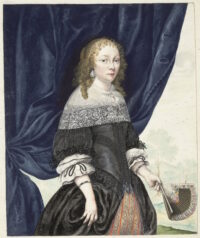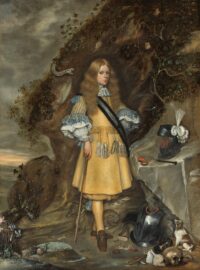
Art was very much the business of two generations of the Ter Borch family. Gesina’s father Gerard ter Borch the Elder was a painter who had practiced successfully in Rome for many years. He taught his eldest son Gerard who would go on to even greater success as portraitist for the aristocracy of Europe and creator of genre paintings that inspired Golden Age luminaries like Johannes Vermeer. The father also taught his younger son Harmen ter Borch, his daughter Gesina and his youngest son Moses.
Moses’ promising artistic career was cut short when he joined the Dutch Navy in 1664 when he was just 19. He fought against the British in the Second Anglo-Dutch War (1665-1667) and died from injuries sustained in the failed Dutch attack on Harwich in June 1667.

Moses ter Borch was the apple of his family’s eye, and his sister Gesina lovingly depicted him wearing a dress with a white apron, and a hat with feathers that contrast sharply with the dark background. He is carrying a drum and holding drumsticks. Next to him stands a toy horse on wheels, against which leans an orange pennant. A whip, several musical instruments and a sword are shown lying on the floor. The toys are references to his later life as a soldier. The artist inscribed the year 1647 on the portrait, but she almost certainly painted it 20 years later, following Moses’ death.

* This article was originally published here






No comments:
Post a Comment